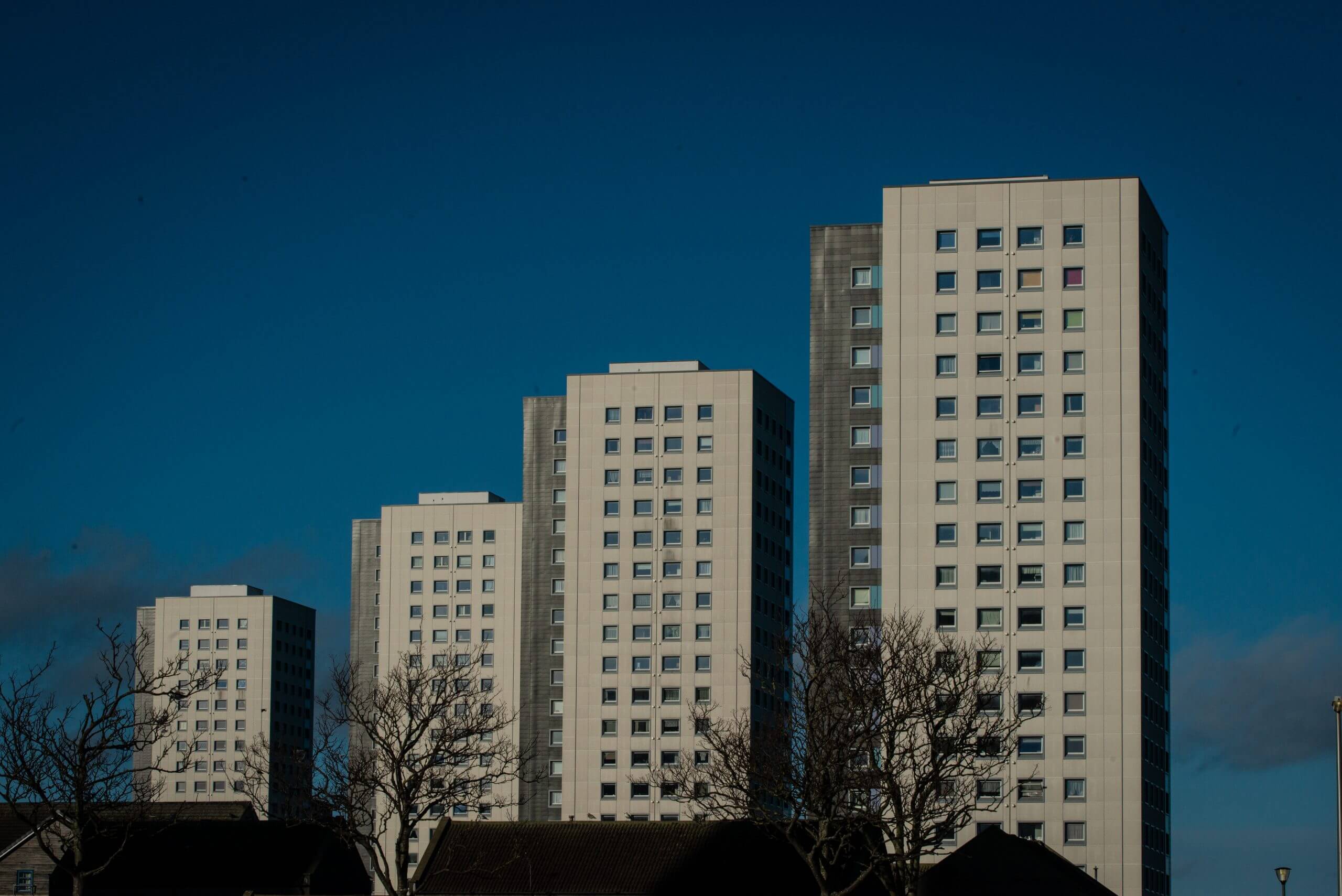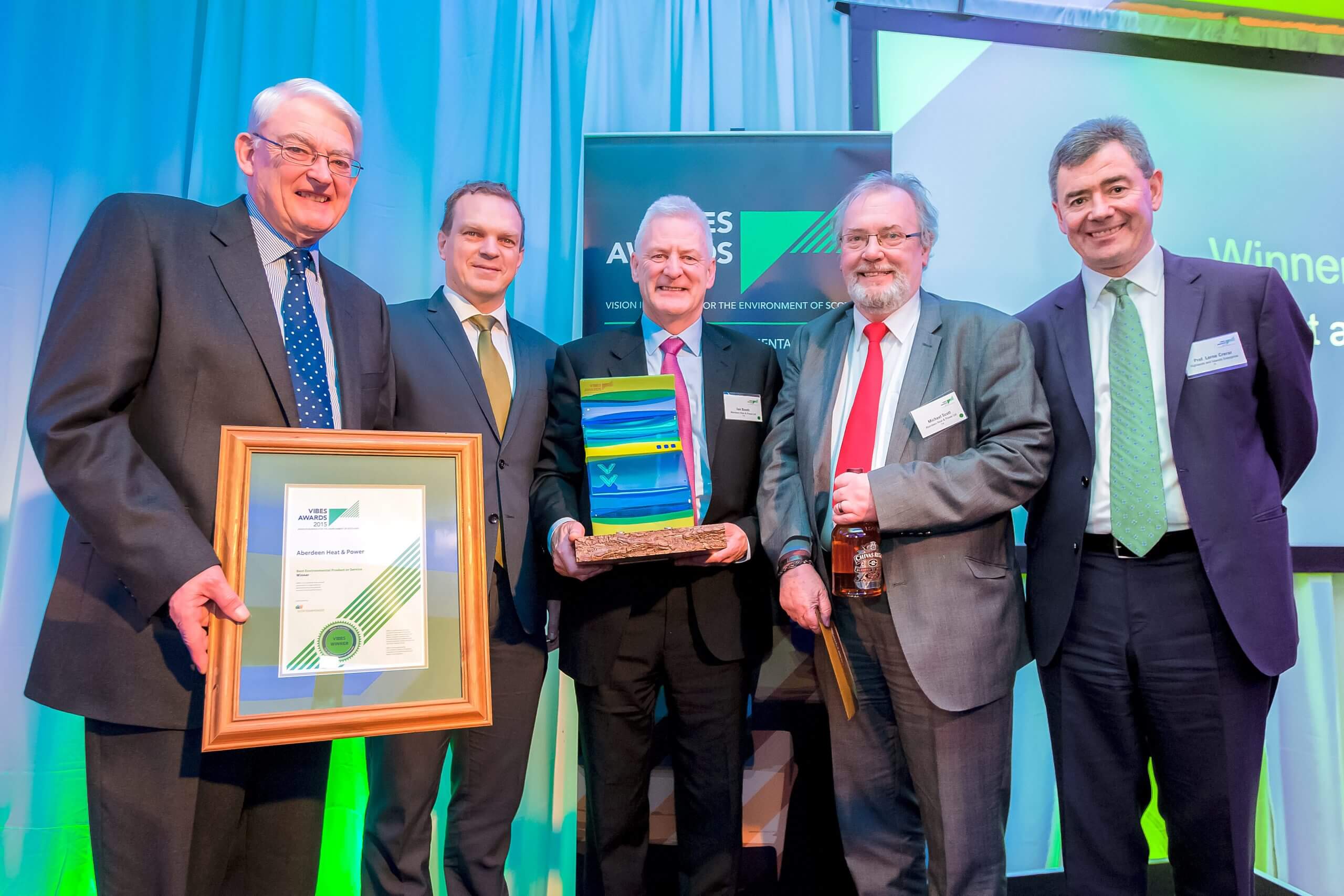We were established by Aberdeen City Council in 2002 as an independent not-for-profit company to help address fuel poverty in the city’s municipal housing stock.
Our overarching goal is to tackle fuel poverty in the city’s council-owned high rise blocks and we have achieved up to 40% heating cost savings for the thousands of residents we supply.
We have now widened our key commitment to providing affordable heat and hot water to households right across the city, as well as to a mix of public and private enterprises. Among these are…
- Residential flats and houses
- Schools and higher education campuses
- Student accommodation
- Health centres
- Sports facilities
- Office blocks.


Aberdeen Heat & Power is recognised as an award-winning global leader for our work in developing and operating district heat networks. Our recognition includes…
- Outstanding Achievement in Housing Award, at the UK Housing Awards 2008
- Sustainability Award, in the Innovation and Progress category of The Guardian Public Sector Awards 2008
- Award of Excellence for a Municipal Scheme serving less than 10,000 Citizens at the 3rd Global District Climate Awards 2013
- Winner of Environmental Product or Service award at Vision in Business Environment Scotland awards 2015
VIBES Awards 2015
Image by Malcolm McCurrach | New Wave Images UK | All rights Reserved.
WHO WE ARE
Our team at Aberdeen Heat & Power is led by Chief Executive Officer Ian Davidson and a small team of dedicated energy and building professionals. Supporting them are key external financial and technical advisers who bring additional essential skills to the mix.
Strategic guidance comes from our board of directors, with Ramsay Milne as chair. Two seats are reserved for councillor representatives from Aberdeen City Council, and the other directors are selected for their expertise, experience, and knowledge across a broad range of relevant areas.
Aberdeen Heat & Power is a not-for-profit enterprise, organised as a company limited by guarantee. Ownership is not held by shareholders but by members, of whom we have five including the city council and fuel poverty charity Energy Action Scotland. The remaining three are individuals who have historic links with us.
Any surpluses we generate are not distributed as dividends but are reinvested in the business to ensure we are able to continue supplying affordable heat and hot water as well as extending our networks across Aberdeen.

WHAT WE DO
We generate, distribute, and retail heat and hot water to public and private customers across the city of Aberdeen via our network of communal and district low-carbon heat networks.
A heat network is created when two or more homes or commercial spaces are served by a single energy source, typically a boiler or generator. Where the network is contained in one building — such as a block of flats — we call this a communal heat network while those serving more than one building is a district heat network.
Where there is a district heat network, hot water carries heat from a central plant room through a network of specialist insulated pipes. There are two parallel pipes — one takes hot water from the plant, the other returns cooler water for re-heating. We usually bury these pipes, but they can run above ground.
Once inside the customer’s property, the heat network connects via a hydraulic interface unit (HIU) containing a plate heat exchanger to the internal central heating system. A pump in the HIU then pushes the hot water around to the radiators and taps.
And because all the heat generation takes place off the premises, being connected to a district heat network is far less intrusive than running a regular domestic or commercial boiler-based system.
Our plant rooms contain a series of boilers, configured to match both high winter or lower summer demand. Some of our larger networks also run combined heat and power (CHP) units which generate electricity using a reciprocating engine — a little like those used in trucks — with heat as a by-product.
Most of Aberdeen Heat & Power’s generation equipment is currently fired by natural gas, but these can in the future be adapted to run on alternative renewable gas. We also operate thermal stores at our Seaton plant room. These are very large hot water tanks contained in two-skin cylinders with a vacuum between skins. We use them in conjunction with CHP to balance the demand for electricity — which peaks during the day — and for heat, which rises during the evening.
We also recover waste heat from the Lynx Ice Arena’s ice chilling process and we are exploring other options to further reduce our carbon footprint.



